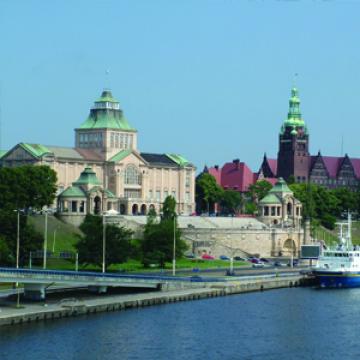
Before the World War ll, the city of Stettin was the capital of the Prussian Province of Pomerania. After the War, the city became Polish and took the name of Szczecin. The german population fled or was expelled, and the devastated town was rebuild by Polish people who often came from the East part of Poland. The most impressive building of the city is surely the National Museum.
The National Museum in Szczecin is the largest cultural centre in Western Pomerania. It belongs to a group of seven Polish museums which have the honor to call themselves “national” institutions owing to their prestige and nationwide importance of their exhibits. The National Museum in Szczecin has many works ranging from painting, sculpture, modern art, handicrafts, to archeological and sailing works. It also contains artistic exhibits of non-European cultures.
The tradition of collecting works of art in Szczecin dates back as far as to 16th century. Phillip II, a great humanist and expert, was particularly keen collector of art known all over Europe. After the dynasty of Gryfici (the local dukes) had come to the end, the collection was dispersed and it was not until 19th century that efforts were made to set up a municipal museum. It was established in 1913 in WaÅ‚y Chrobrego, close to the river bank. Owing to the generous donations of patrician inhabitants of the city, such as Heinrich Dohrn, and to the activities of the Museum’s first director, Walter Riezler, a large collection including ancient art, modern painting and natural specimens was acquired. The other former museum – The National Museum of Pomerania – had to wait until the years between World War I and World War II to be given its own seat in a Baroque building which used to belong to Pomeranian District. During World War II the collections were badly scattered. A part of the former municipal Museum’s collection was taken to West Germany and became the fundamental part of the collection of Pomeranian Foundation in Kiel, which later came to be known as National Pomeranian Museum in Gryfia. The Polish Museum, created in 1945, which was later in 1970 raised to the rank of a national museum, took over two additional buildings (one of which has been a Gothic town hall) in the 1970s as well as the remains of the former German museums. Later, it acquired many new works increasing its holdings and setting up its own collections.
a video about The National Museum in Szczecin : http://www.youtube.com/watch?v=SlIz_HOaTCU

